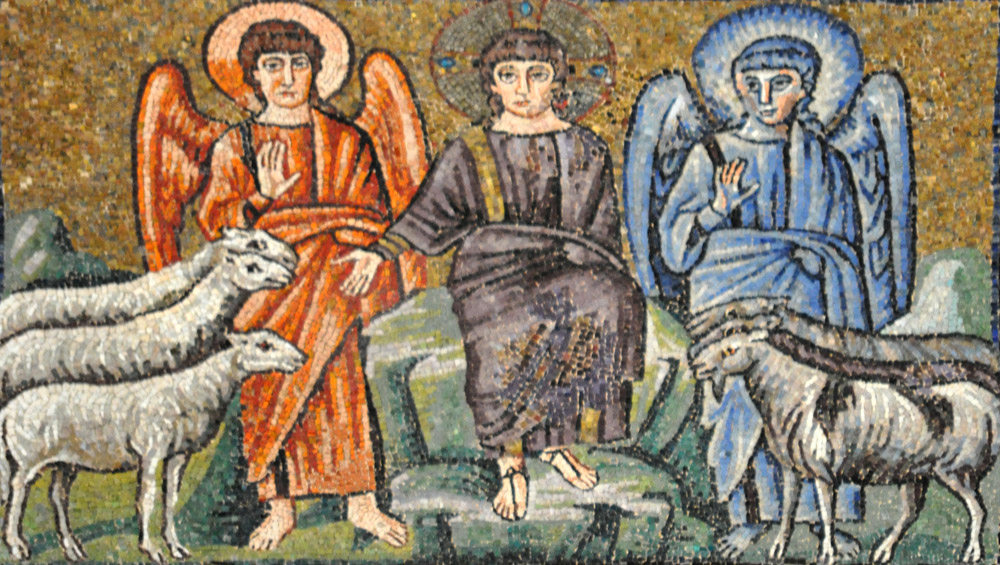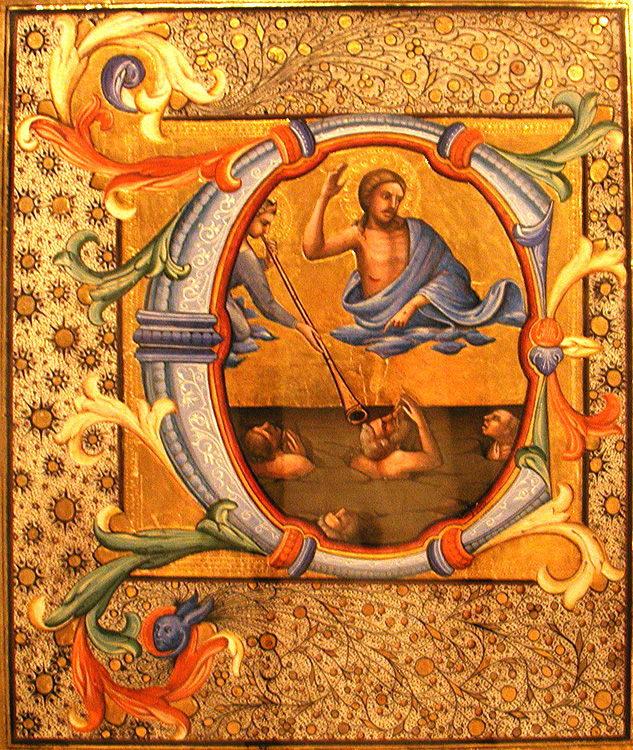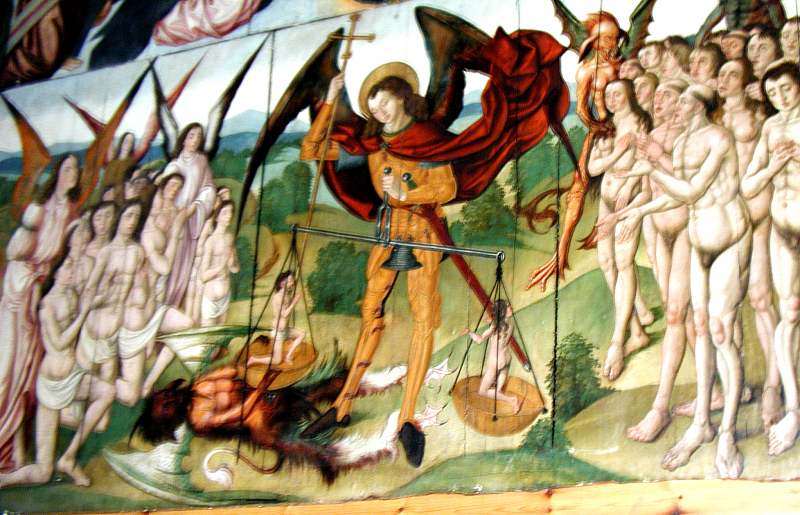The Iconography
Romanesque images are more elaborate. Christ will be seated on a rainbow throne in a mandorla attended by angels while below him the dead rise from their graves and are conducted either to Heaven or to Hell, which is pictured as a monstrous maw. One or more angels will be blowing trumpets. One interesting case also represents the Father by picturing the empty throne of the Temple above the mandorla.
The rainbow is from Revelation 4:3, the raising of the dead and the trumpets from I Corinthians 15:52, I Thessalonians 4:16-17, and Revelation 8:1-12.
Sometimes images of this type will occupy the entire counterfaçade, for example at Torcello's 12th-century cathedral, Genoa's Cathedral of St. Lawrence (1307-12), and the Scrovegni Chapel in Padua. This use of the counterfaçade seems to have gone out of favor after the 14th century.
Mandorlas and thrones are found less often in the 15th century, and they become rare in later periods. Christ's gesture in the sculpture above, with the right arm raised in an ⌞ shape, is seen occasionally in medieval images but becomes common in the Renaissance and Baroque periods, most notably in the Rubens Great Last Judgment.
Medieval examples often have St. Michael weighing the souls on a balance scale while a demon tries to cheat by pulling on one of the plates, as in the third picture at right.
Sometimes this iconography is combined with that of the Deësis: As he sits above in the usual position, Christ is flanked by Mary and John, who pray for the people below while angels bring him the instruments of the Passion as a reminder of his mercy (example). In this example the artist makes it clear that it is specifically for the sinners, not the saved, that John and Mary intercede.
This primary model is not the only way the final judgment may be pictured. Some images narrow the focus, such as this evocation of the fate of sinners, or they reimagine the scene, as in the second picture at right, where souls are called up from a primal mud. Finally, in the late Middle Ages literary and pictorial genres focused on the assembling for judgment of sinners (in the art) or of exemplars of both vice and virtue (in the literature). In literature such as the Chester Last Judgment, men and women of various stations in society announce their sins or virtues and are conducted to their reward.1 In the art only sinners of various kinds are pictured, led on their way by skeletons example.
Prepared in 2016 by Richard Stracke, Emeritus Professor of English, Augusta University. Revised 2018-01-31.
HOME PAGE
In the Last Judgment tympanum at Conques, France (12th century) Christ's hand gestures welcome the saved on one side and reject the damned on the other. For a detailed discussion of this work, follow this link.
OTHER IMAGES:

In Matthew 25:31-46 Jesus predicts a final judgment in which he will separate the "sheep" from the "goats" (i.e., those who succored his "least brethren" in their need from those who did not). Here we see only the right-hand gesture of welcome, the left being concealed within his toga. See the description page.

Manuscript illumination by Lorenzo Monaco, 15th century – See the description page.

A wall painting in Burgos, Spain. St. Michael weighs souls while a demon tries to cheat. See the description page.
MORE IMAGES- Medieval panel of the Last Judgment.
- 14th century: Relief carving at Orvieto Cathedral.
- 14th century: In Alberegno's Polyptych of the Apocalypse, two of the five panels present images of the Final Judgment drawn from the Book of Revelation.
- 1344: Detail from Guariento di Arpo's Coronation of the Virgin altarpiece.
- Circa 1400: This illumination for the "Seven Requests of Our Lord" prayer in a Book of Hours has the reader join with all who are to be resurrected on Judgment Day in praying Christ for mercy. The same occurs in a very similar miniature from later in the century.
- 1562-63: Tintoretto's Last Judgment organizes the traditional elements vertically, so that Hell is at the bottom and Heaven at the top.
- 19th century: fresco in Taufers, Italy.
ALSO SEE
